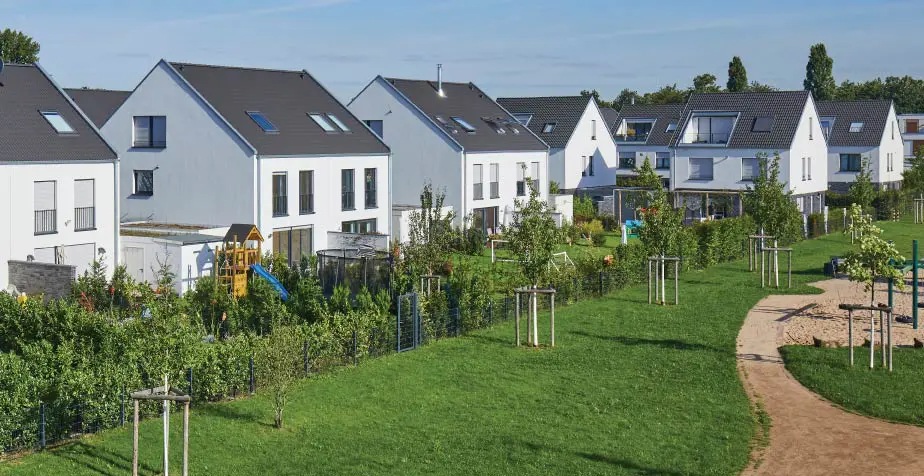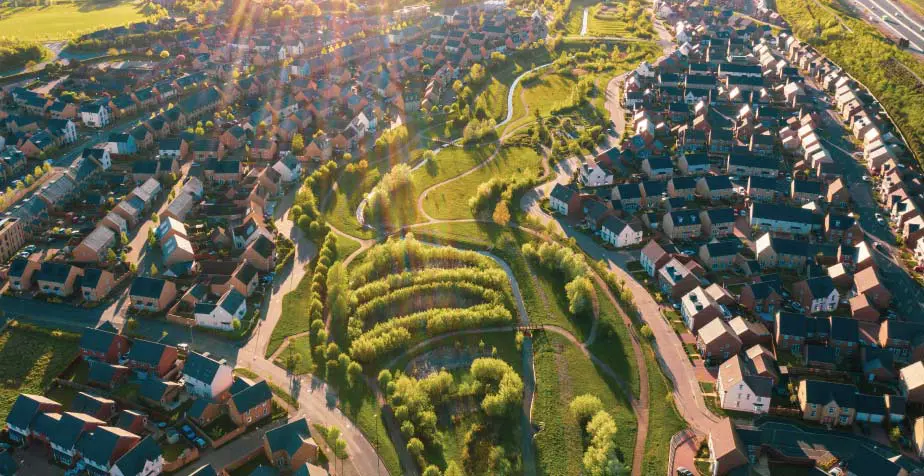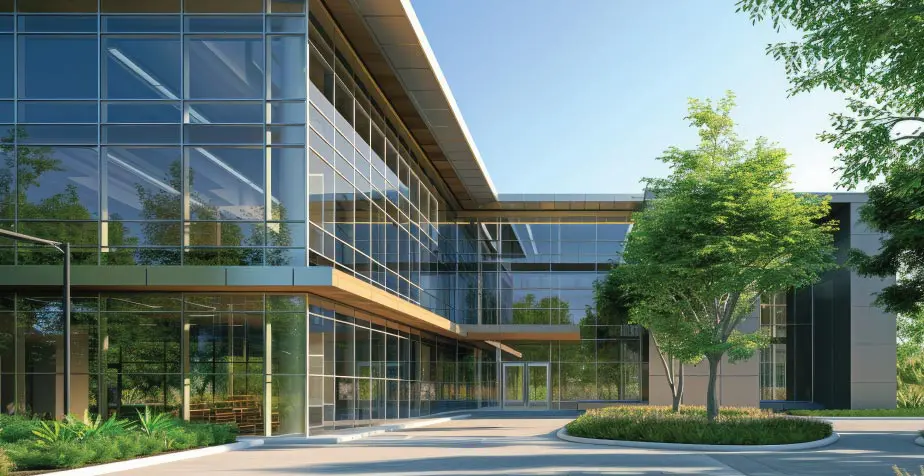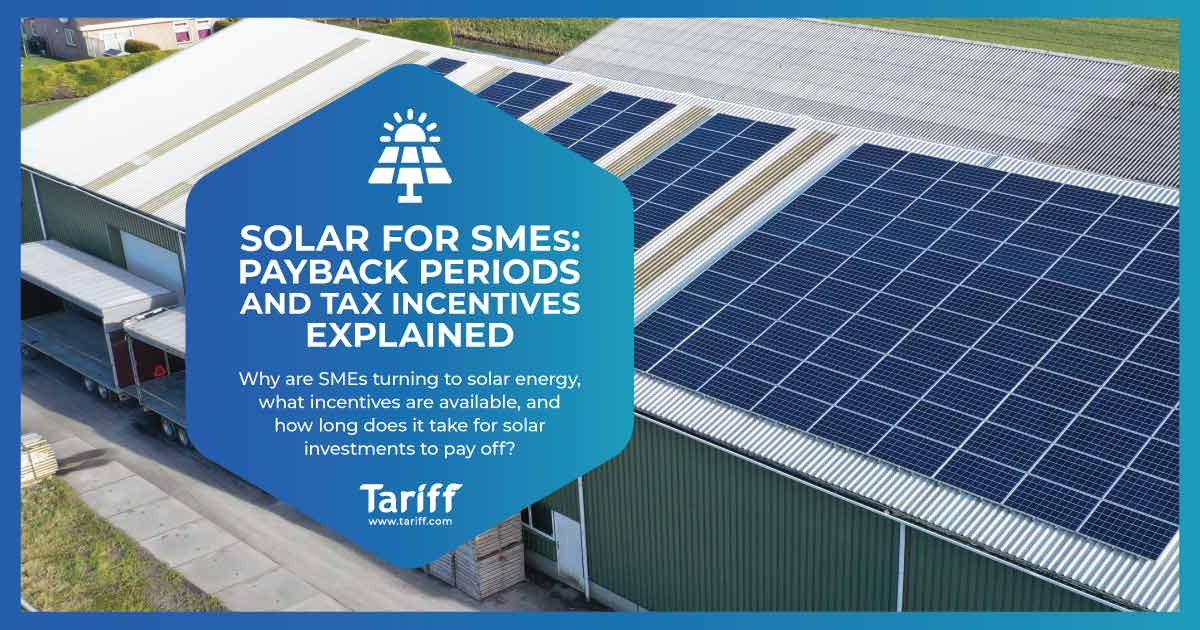How BNG Affects Housing and Infrastructure Projects
In recent years, the UK has taken bold steps toward addressing environmental concerns through stronger legislation and policy frameworks. One of the most transformative developments is the introduction of Biodiversity Net Gain (BNG), a principle enshrined in the Environment Act 2021. But what exactly is BNG, and how does it impact housing and infrastructure projects across the country?
BNG, or biodiversity net gain, requires developers to leave the natural environment in a measurably better state than it was before development began. It’s not just a theoretical concept, it is a legal obligation that fundamentally changes how projects are planned, designed, and delivered.
What is Biodiversity Net Gain?
BNG aims to ensure that development projects enhance biodiversity rather than diminish it. Under the Environment Act 2021, most new housing and infrastructure developments in England must deliver at least a 10% net gain in biodiversity. This is assessed using a standardised BNG metric, which measures biodiversity in terms of habitat area, distinctiveness, condition, and strategic significance.
For housing developers and infrastructure planners, this means biodiversity can no longer be an afterthought. Instead, it becomes a central component of the planning and design process. Developers must carefully assess site conditions and integrate ecological enhancements into proposals from the outset.
BNG also aligns with the UK’s broader environmental goals, including commitments in the 25 Year Environment Plan and strategies to halt species decline and restore natural habitats.
BNG in Housing Development

Housing development is one of the sectors most significantly affected by BNG regulations. Traditionally, greenfield housing schemes might have resulted in the loss of valuable habitats and natural spaces. Now, developers must mitigate these impacts and demonstrate measurable biodiversity improvements.
BNG in housing development can involve creating new habitats, enhancing existing ones, or providing off-site biodiversity units if on-site options are limited. Examples include restoring meadows, planting native woodlands, creating ponds, or installing green roofs and living walls.
A growing number of large-scale housing projects have set ambitious targets well beyond the minimum 10% requirement. For instance, the Sherford development in Devon has integrated extensive green corridors and large open spaces designed for wildlife movement, offering residents immediate access to nature while promoting ecological resilience.
Crucially, these biodiversity enhancements need to be maintained for at least 30 years, ensuring that they provide long-term benefits rather than temporary gestures. Compliance requires working closely with ecologists, planners, and local authorities to ensure that biodiversity net gain objectives are met effectively and sustainably.
BNG for Infrastructure Projects
While BNG has obvious implications for housing, it also greatly impacts infrastructure projects, from new roads and rail lines to renewable energy installations and utilities. Infrastructure developments often cross diverse landscapes, potentially disrupting habitats on a large scale.
BNG for infrastructure projects requires a strategic, landscape-scale approach to habitat creation and enhancement. Developers must conduct thorough ecological surveys and plan compensatory measures that can offset unavoidable losses. The use of a robust BNG metric helps quantify impacts and ensure gains are meaningful and measurable.
For example, the HS2 rail project, one of the UK’s largest infrastructure undertakings, has committed to creating over 33 square kilometres of new habitats, including woodlands, grasslands, and wetlands. Such initiatives illustrate how infrastructure can deliver wider ecological benefits beyond simple compliance.
Collaboration is also key. Infrastructure projects often require cooperation with local councils, conservation organisations such as The Wildlife Trusts, and community stakeholders to identify suitable areas for habitat creation or improvement. This integrated approach helps deliver not only compliance but also additional social and environmental co-benefits, such as flood resilience and improved recreational spaces.
Planning and Design Under BNG

The introduction of BNG regulations has fundamentally reshaped the planning process. Developers must incorporate biodiversity considerations into every stage, from site selection and baseline assessments to final master planning and design.
During site assessments, developers evaluate existing ecological value using the BNG metric. This includes documenting habitat types, their condition, and strategic importance in the local ecological network. These insights directly shape decisions about layout, design, and mitigation strategies.
Modern design solutions that support BNG include:
- Retaining mature trees and hedgerows, which are vital for supporting birds, bats, and invertebrates.
- Establishing multifunctional green spaces that serve both ecological and social functions, such as pollinator-friendly planting in community parks.
- Integrating sustainable drainage systems (SuDS) that reduce flood risk while creating wetland habitats.
- Designing green roofs and façades to support urban wildlife and improve microclimates.
These measures not only help meet BNG targets but also make developments more attractive to residents and investors by enhancing wellbeing and creating strong community identities.
Delivery and Long-Term Management
Compliance with BNG extends far beyond planning and initial construction. Developers must commit to ensuring that biodiversity enhancements are maintained and monitored for at least 30 years. This long-term approach represents a major shift from traditional “build and leave” mindsets.
Long-term stewardship strategies may include:
- Establishing legal conservation covenants or Section 106 agreements to guarantee future habitat management.
- Partnering with trusted organisations such as local wildlife trusts, community groups, or dedicated land management bodies.
- Creating volunteer or educational programmes to involve residents and local communities in habitat upkeep, fostering a sense of ownership and responsibility.
Regular monitoring and adaptive management are crucial to success. Developers must submit periodic reports to local authorities, demonstrating that habitat conditions meet or exceed planned targets. If issues arise, for example, invasive species outbreaks or unexpected habitat decline, responsive management actions are required.
At Tariff.com, we understand the importance of this long-term view. We support clients not only in initial compliance but also in ongoing habitat management, ensuring projects remain beneficial to both nature and stakeholders over decades.
How Stakeholders Can Comply Effectively

BNG introduces complexities, but clear strategies can help developers, local authorities, and landowners navigate compliance successfully.
Early engagement with experts
Working with qualified ecologists and biodiversity specialists from the outset is essential. Early baseline studies shape designs and reduce costly changes later.
Accurate use of metrics
Leveraging tools like the Defra biodiversity metric ensures that impacts and gains are correctly quantified, making compliance transparent and defensible.
Holistic design integration
Biodiversity considerations should be woven into all stages of design, not tacked on at the end. This holistic approach reduces conflicts and improves project outcomes.
Stakeholder collaboration
Successful BNG implementation often relies on partnerships with local planning authorities, conservation charities, landowners, and the wider community. Shared objectives and transparent communication foster support and smooth delivery.
Exploring off-site options
Where on-site enhancements are not possible, investing in high-quality off-site biodiversity units can ensure compliance. However, these must be carefully chosen and verifiable to deliver genuine, lasting ecological value.
At Tariff.com, we guide clients through these stages, providing end-to-end support from ecological assessments to securing long-term management solutions and sourcing credible off-site BNG units.
The Broader Impact of BNG
BNG is more than a regulatory requirement, it represents a shift toward a new development ethos. Enhanced biodiversity supports vital ecosystem services such as water purification, flood risk reduction, carbon sequestration, and urban cooling.
For local communities, biodiverse green spaces improve mental and physical health, foster social cohesion, and create beautiful, inviting places to live and work. Studies show that proximity to nature can lower stress, encourage physical activity, and enhance overall wellbeing.
Furthermore, developers who embrace BNG can strengthen their brand reputation, attract environmentally conscious buyers and investors, and gain competitive advantages in an increasingly sustainability-focused market. By delivering visible biodiversity improvements, projects can differentiate themselves and meet the growing demand for nature-positive development.
Looking Ahead to a Greener Future
As biodiversity net gain becomes a mainstream requirement, the future of development in the UK will be more aligned with environmental stewardship and nature recovery. The Environment Act 2021 marks a major pivot towards integrating nature into every aspect of the built environment.
For developers and infrastructure providers, BNG is an opportunity to lead, not just comply. Those who actively embrace these principles can help shape a resilient, attractive, and sustainable future.
To learn more about how BNG could affect your upcoming projects, or explore our approach to Net Zero strategies and how they complement nature-positive planning.
How Can Tariff.com Help?
If you’re a developer or landowner navigating BNG for the first time, you’re not alone, and you don’t have to go it alone either.
At Tariff.com, we help businesses align with environmental regulations and achieve their sustainability goals. From understanding your obligations under BNG to sourcing reliable offset providers and tracking long-term impacts, our expert team supports you every step of the way.
If your project cannot achieve full BNG on-site, we can help identify and secure suitable off-site solutions. Tariff.com is actively involved in various registered projects across the UK, including a strong presence in the Bristol region, where we work closely with local stakeholders.
However, our operational scope is nationwide. We partner with carefully selected landowners and local authorities to ensure that all BNG units sourced via Tariff.com are not only registered and compliant but also represent genuine, high-quality environmental enhancements, delivering the biodiversity uplift your project requires.
Got questions about how BNG might affect your next project? Interested in sourcing BNG units? Reach out to us today. We’d love to help.




